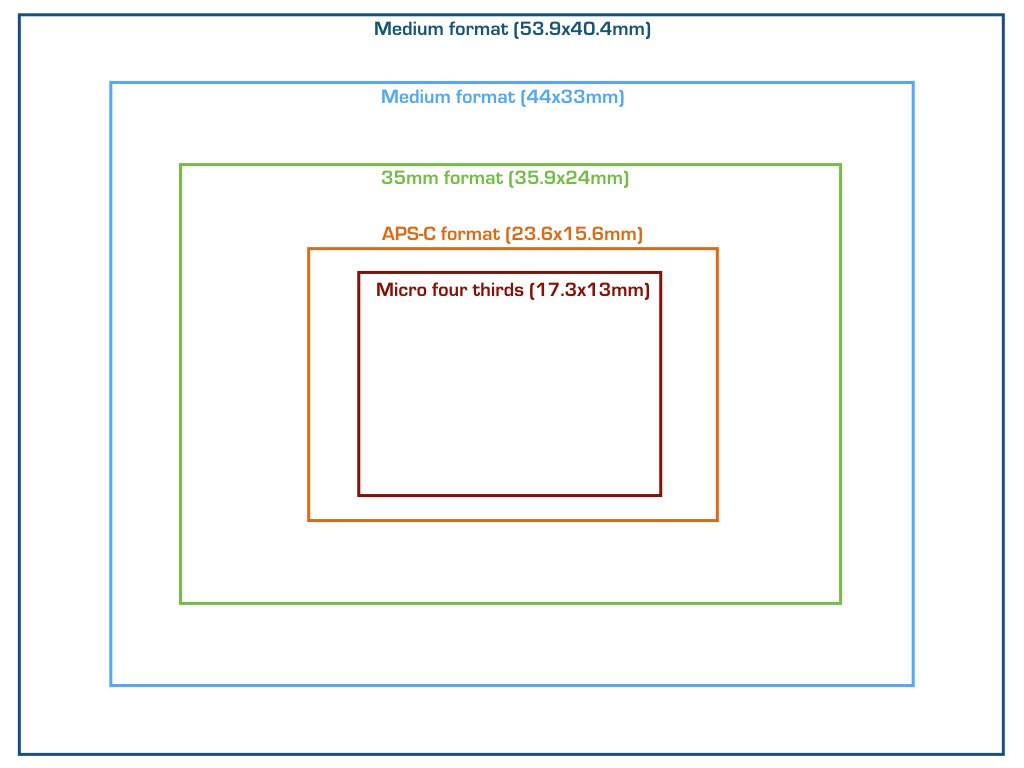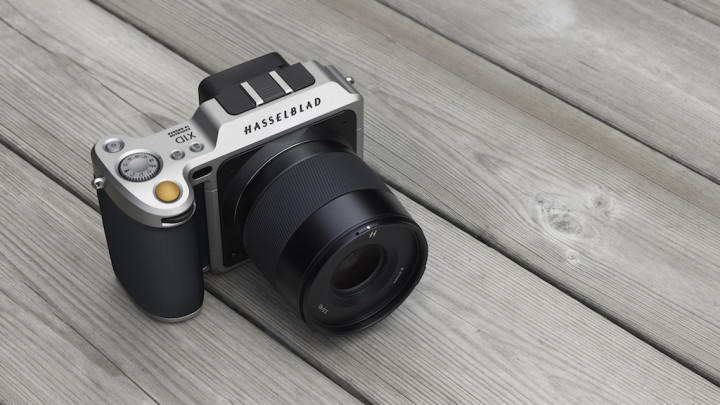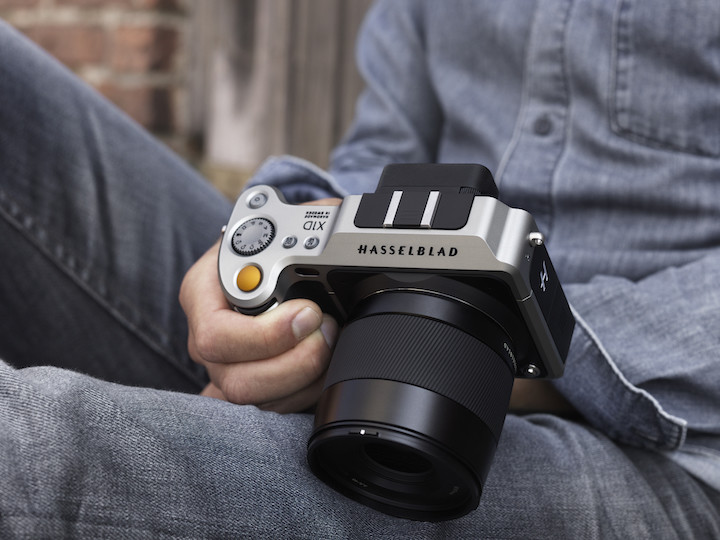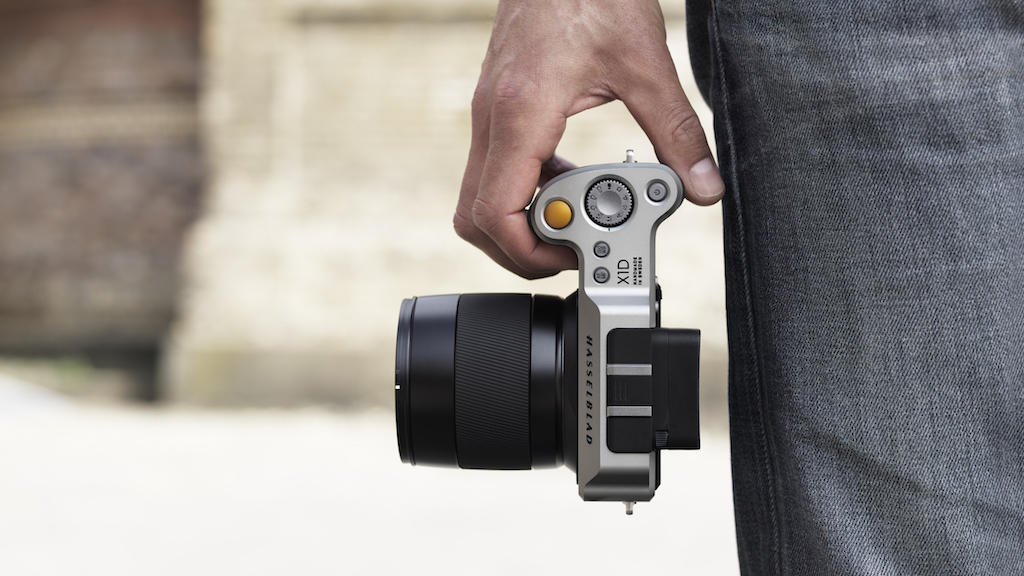Hasselblad made history thanks to its medium format cameras (12 of their film cameras are still on the surface of the moon) and nowadays the company produces several high-end medium format DSLRs. Today the Swedish company added a new system to its catalogue. Small hint: there’s no mirror!
The new X1D-50c has the best of two worlds: a large sensor housed in a compact and light camera body. The latter is definitely the most pleasant surprise: the weight and dimensions are not that different from an A7r II and even smaller than a Nikon D810. So for medium format, it is quite compact!
If you are interested in all the specs and details about the new camera, I invite you to check our news article on the curation website. Here I will share some personal thoughts about this new system.
Before starting, let’s sum up some facts about medium format if you are not familiar with it.
Medium format includes any format larger than 35mm (36x24mm) and smaller than 4×5 inches (102x127mm, which is considered large format). One of the most popular medium formats is 120 film which is available in different aspect ratios (6×4.5, 6×6, 6×9 etc.).
With digital, there are currently two main medium format sizes on the market used by several brands including Hasselblad, Phase One and Pentax:
- 53.9×40.4mm (H6D-100c, Phase One XF 100MP and more)
- 44x33mm (X1D-50c, H6D-50c, Pentax 645z and more)
The former is very close in size to the 6×4.5 format of 120mm film (whose size is precisely 56×41.5mm). The second is smaller and can be considered the APS-H of medium format (the crop factor is approximately 1.25x). There can be tiny variations in size between these two formats: for example there is a 45x30mm sensor used by Leica for its S system.

The Hasselblad X1D-50c houses a 50MP CMOS sensor that is 44x33mm in size, which is 1.7 times bigger than the one found in the Sony A7 series. It is a sensor designed by Sony, released in 2014 and used by Pentax, Phase One and Hasselblad on other mirrorless and DSLR medium format cameras. Wait a minute, did you just say “mirrorless”? Yes, because the A-series by Phase One is mirrorless too. The difference however is that the camera is based on the Alpa film system with a digital back. So we can consider the X1D the first 100% modern digital mirrorless system (and “world’s first” always sounds nice in a press release anyway!).
Long story short, the X1D-50c uses a “crop” medium format sensor in comparison to the “full frame” medium format. However when we refer to full frame, we generally mean the 35mm format that, after being the most popular film format, is now also popular for digital photography (the success of the Sony A7 series being the latest proof).
So what do I mean by my title? Well, I’m wondering if one day these medium formats could become as popular as 35mm and APS-C. I think it’s a big challenge but why not daydream for a second?

Let’s go back in time again. Before the rise of 35mm film cameras for both professionals and amateurs, medium format was the most popular film format used in the first half of the 20th century. Then it gradually became the choice of professional photographers and aficionados. Today it still has its niche of users especially within the film community.
The first digital medium format cameras released from 2004 onward by Mamiya and Hasselblad were very expensive. Hasselblad also produced digital backs that could be adapted to its film cameras but they were pricey as well. They are cameras mainly used for high level fashion and landscape work (and also rented when needed for specific assignments when the photographer can’t afford the investment). But as the technology evolved, medium format and the prices started to decrease.
Today, some of these cameras are still very expensive (the Phase One XF 100MP with the 80mm lens costs $49,000) but other popular medium format cameras such as the Pentax 645z cost around $7000 for the body, which is still a lot of money but on the same level as a high-end 35mm DSLR like the Nikon D5.
The new Hasselblad X1D will start at a retail price of $9000 (body only) or $11290 with the 45mm lens. Expensive, yes, but I do wonder if other brands will join the medium format market now that mirrorless technology is in the game. The 50MP sensor designed by Sony is used by three companies already and I wouldn’t be surprised if Fujifilm or Sony join the party in the not-so-distant future. Sony has a valid partnership with Zeiss who has designed many medium format lenses (including the one on the Hasselblad cameras used for the NASA landing on the moon). Fujifilm designed mirrorless film cameras in the past including the re-branded X-Pan by Hasselblad and has lots of knowledge when it comes to optics (they co-develop the HC lenses for the Swedish company). So I definitely think it’s possible that we’ll see the medium format market increase in the years to come. More cameras and more brands mean more competition and usually that triggers a decrease in price and a bigger second-hand market. The mirrorless option is a good incentive and Hasselblad showed today that the reduced size and weight is possible.
Other questions remain: do we really need it and who it is for?

Certainly the costs involved in the design and manufacturing of medium format cameras and lenses is not indifferent. I am sure other brands will carefully consider whether it is worth the effort and the investment. It might take a long time before it takes off in popularity and the only way to reach a larger group of customers is if the price decrease. But if it happens, we might remember this X1D as the first step in that direction.
For now the specs of the X1D are mainly attractive for fashion, landscape and fine art photographers. The investment is considerable but not out of reach for a professional photographer with good experience and a good income that can amortise the cost over time.
Personally, I am curious to try it to expand my medium format knowledge (and have some fun with it, maybe by comparing the camera to the A7r II!). Of course we could also say that right now the mirrorless cameras we have (micro four thirds, Fujifilm and Sony E system) are enough for most situations and needs. But the “wow factor” is always enticing (and let’s not even start with G.A.S.!).
Are you interested in the new Hasselblad X1D? Share your thoughts below!
